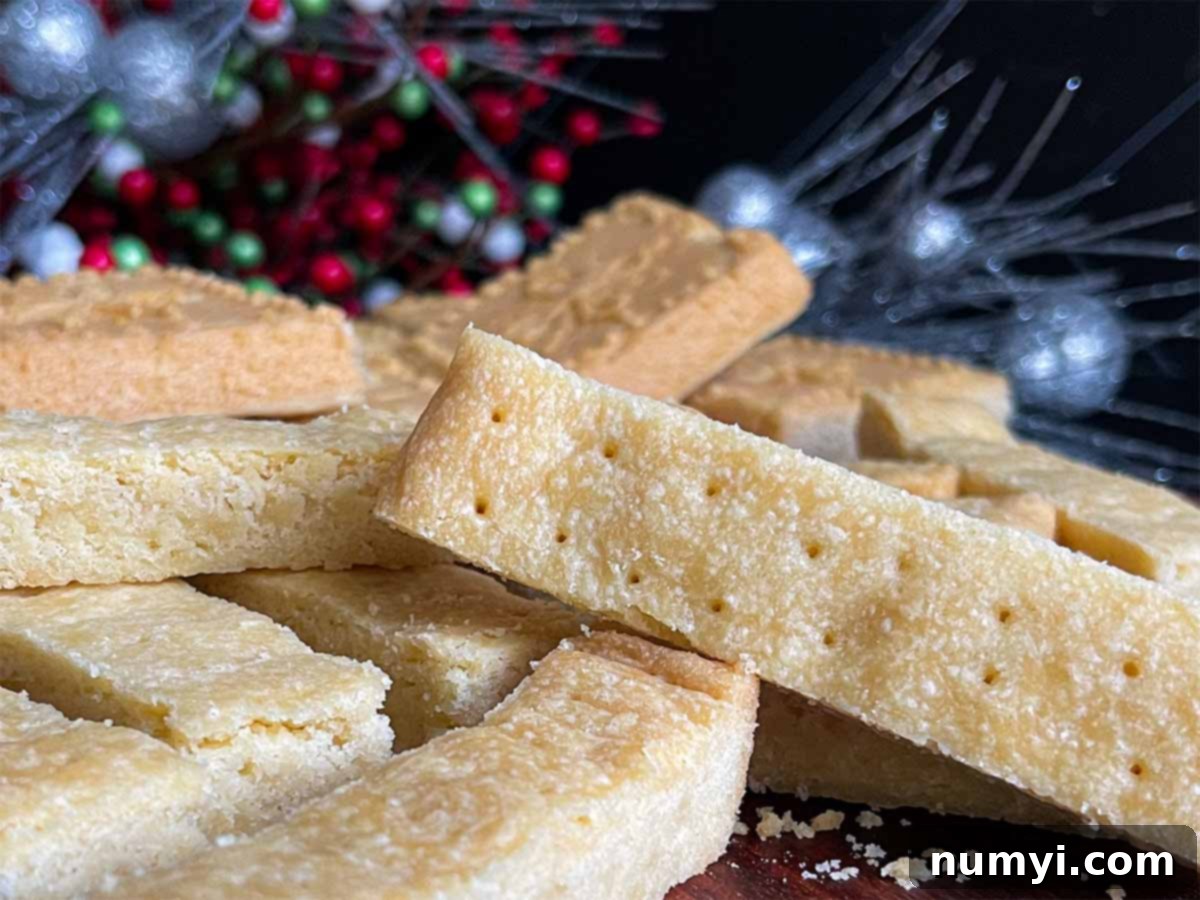Easy Classic Shortbread Cookies: Your Go-To Recipe for Buttery, Flaky Perfection
There’s nothing quite like the comforting aroma and melt-in-your-mouth texture of a perfectly baked shortbread cookie. These easy classic shortbread cookies are the epitome of simple elegance, offering a tender, buttery-rich, and wonderfully flaky experience that rivals even the most famous Scottish brands, like Walker’s Shortbread. Whether you’re preparing for the holiday season or simply craving a delightful treat, this straightforward recipe will become a treasured favorite in your kitchen. Made with just a handful of pantry staples, you’ll be amazed at how effortlessly you can create these iconic cookies, perfect for gifting, entertaining, or a cozy afternoon indulgence.
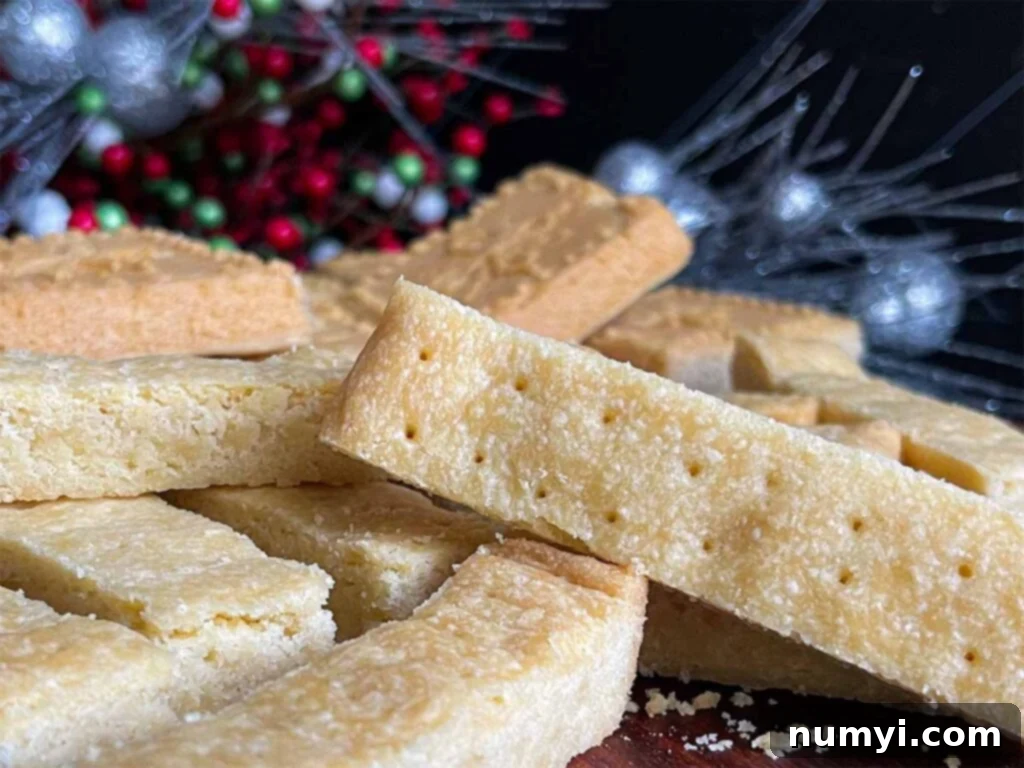
Why You’ll Adore This Homemade Shortbread Recipe
These classic shortbread cookies aren’t just a treat; they’re an experience waiting to happen. Here’s why this recipe will quickly become one of your absolute favorites:
- **Simplicity with Four Essential Ingredients:** You’ll only need all-purpose flour, unsalted butter, confectioners’ sugar, and a touch of salt. That’s it! Most likely, these staples are already in your pantry, making spontaneous baking sessions a breeze. No fancy or hard-to-find components required.
- **Effortless Year-Round Baking:** The straightforward nature of this recipe means you won’t be reserving it just for special occasions. These cookies are so easy to prepare that you’ll find yourself whipping up a batch for everyday enjoyment, coffee breaks, or unexpected guests throughout the year.
- **Surpass Store-Bought Quality:** Bid farewell to those expensive, often slightly stale, plaid tin boxes of shortbread. This homemade version offers a superior flavor and texture that truly can’t be beaten. You’ll enjoy fresh, warm shortbread that tastes infinitely better than anything you can buy.
- **No Special Equipment Needed:** Forget about hauling out a food processor or painstakingly rolling out dough. This recipe is designed for maximum ease. A stand mixer or even a hand mixer will do the trick for creaming the butter and incorporating the dry ingredients. The dough is simply pressed into a pan, eliminating the need for rolling pins or intricate cutting.
- **Perfect for Thoughtful Gifting:** Just like many of our beloved cookie recipes, these easy shortbread cookies make exceptional homemade gifts. Their classic appeal, elegant simplicity, and delightful taste make them a welcome present for friends, family, neighbors, or teachers during any season. Package them in a nice box or tin, and you have a heartfelt, delicious offering.
- **The Quintessential Holiday Cookie:** While fantastic anytime, shortbread cookies truly shine during the festive period. They are a timeless Christmas cookie, evoking warmth and tradition. Their rich, buttery flavor pairs beautifully with holiday drinks and other seasonal treats.
Beyond shortbread, our holiday cookie repertoire also includes delightful thumbprint cookies with their signature red jam centers, rich and aromatic chocolate orange cookies, classic sugar cookies enhanced with heavy cream, and spiced gingerbread cookies topped with corn syrup icing. These are just a few of the sweet creations we cherish during the festive season.
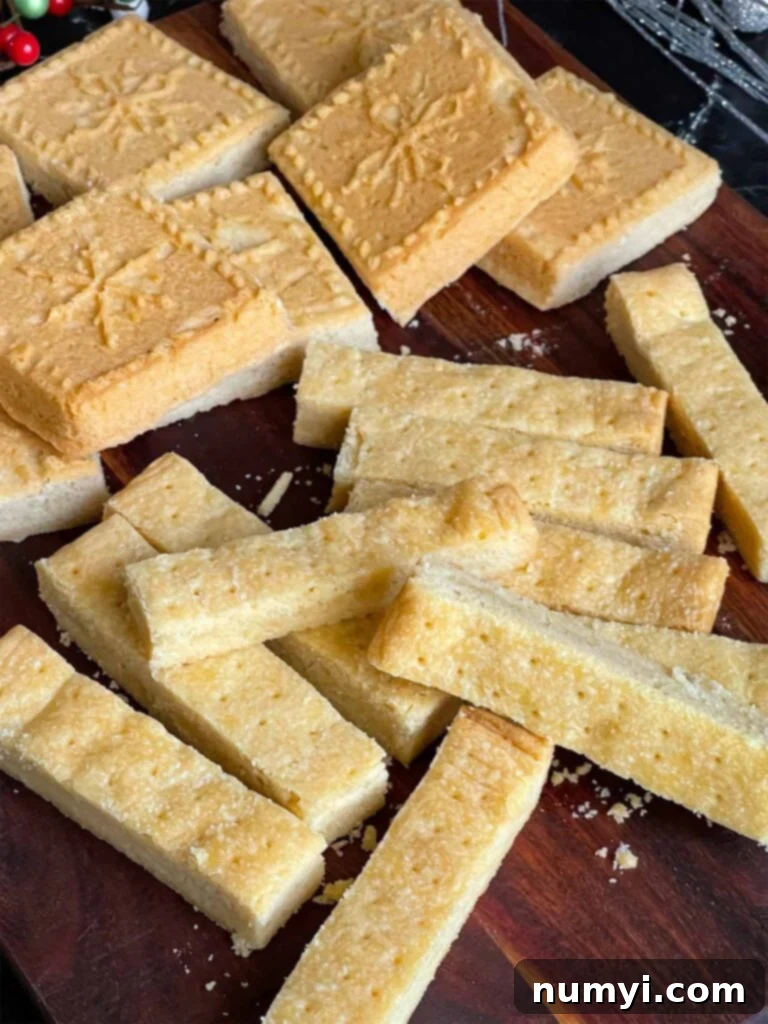
Understanding Shortbread: A Scottish Classic
Shortbread cookies are a traditional Scottish biscuit, renowned for their rich, buttery flavor and crumbly, yet tender texture. Unlike many other cookie varieties, classic shortbread stands apart by typically being made with only three core ingredients: sugar, good-quality butter, and flour. What truly distinguishes shortbread is the absence of any leavening agent, such as baking powder or baking soda. This omission is key to its characteristic dense, crisp, and somewhat crumbly texture, which is a hallmark of authentic shortbread.
The name “shortbread” itself is believed to derive from the term “short,” which, in culinary terms, refers to a pastry or dough that crumbles easily due to a high fat content. The generous proportion of butter in the recipe prevents the formation of long gluten strands, resulting in a tender, melt-in-your-mouth quality rather than a chewy or elastic one. This simple yet effective composition allows the pure flavor of butter to truly shine, making shortbread a beloved staple across generations and cultures, especially during festive periods.
Essential Ingredients for Perfect Shortbread
The beauty of classic shortbread lies in its simplicity. You only need four fundamental ingredients, but the quality of each makes a significant difference in the final product:
- **All-Purpose Flour:** This forms the structure of the cookie. It’s important to measure it correctly (see tips below) to ensure the right consistency – too much flour can lead to a dry, tough cookie.
- **Unsalted Butter:** This is the star of the show. Butter not only provides the rich, signature flavor but also contributes to the tender, flaky texture. We specifically recommend unsalted butter so you can control the salt content precisely.
- **Confectioners’ Sugar (Icing Sugar):** Also known as powdered sugar, this fine sugar dissolves easily into the dough, resulting in a smoother texture compared to granulated sugar, which can sometimes leave a slightly grainy feel. It also contributes to the cookie’s delicate tenderness.
- **Salt:** A pinch of salt is crucial for balancing the sweetness and enhancing all the other flavors, particularly the rich taste of the butter.
I’ve experimented with both standard American butter and European-style butter, and there’s a noticeable difference in the flavor and crumbly texture of these cookies. While both yield delicious results, European-style butter often boasts a higher butterfat content (typically 82% compared to standard 80%). This higher fat content contributes to a superior, richer taste and an even more delicate, melt-away texture. If you can find and use European-style butter, it will elevate your shortbread to an exceptional level.
Don’t Sweat The Recipe is supported by its readers. We may earn a commission if you purchase through a link on our site. Learn more.
Crafting Homemade Shortbread: A Simple Guide
If you’ve never ventured into making shortbread before, prepare to be delighted by how astonishingly quick and easy it is to whip up a batch of these traditional Scottish treats. This recipe simplifies the process, ensuring a perfect result every time.
While traditional Scottish shortbread often calls for caster sugar or baker’s sugar for its fine texture, confectioners’ sugar (also known as powdered sugar or icing sugar) is a readily available and equally effective alternative in many regions. Its super-fine consistency helps create that signature smooth, tender crumb that shortbread is famous for.
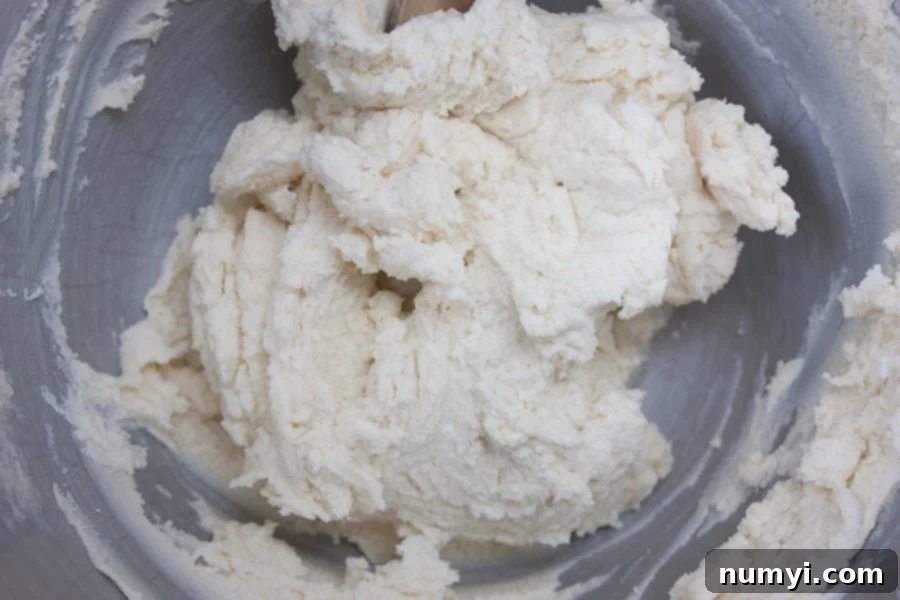
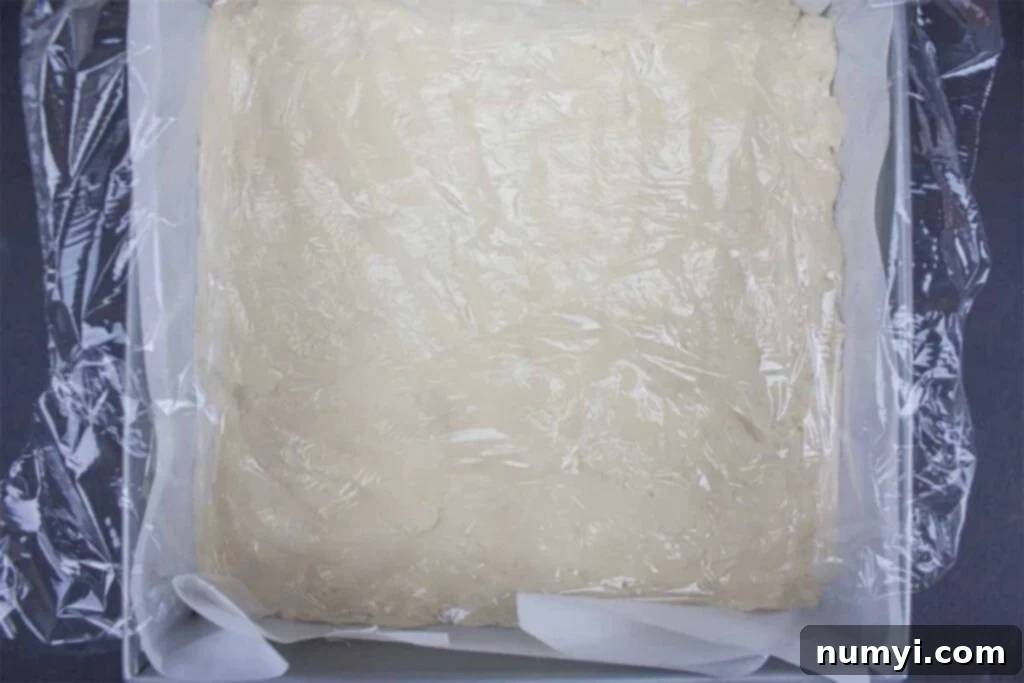
Begin by preparing your dry ingredients. In a medium bowl, thoroughly whisk together the all-purpose flour, confectioners’ sugar (icing sugar), and salt. Whisking ensures these ingredients are evenly combined and aerated, preventing pockets of unmixed components in your final dough.
Next, move on to the butter. In the bowl of an electric mixer fitted with a paddle attachment, cream the room temperature unsalted butter until it becomes light and fluffy. This process incorporates air, contributing to the shortbread’s tender texture. Then, gradually add the whisked flour and sugar mixture to the creamed butter. Beat this mixture until it’s just combined and again light and fluffy. Be careful not to overmix, as this can develop the gluten in the flour, leading to a tougher cookie rather than a tender one.
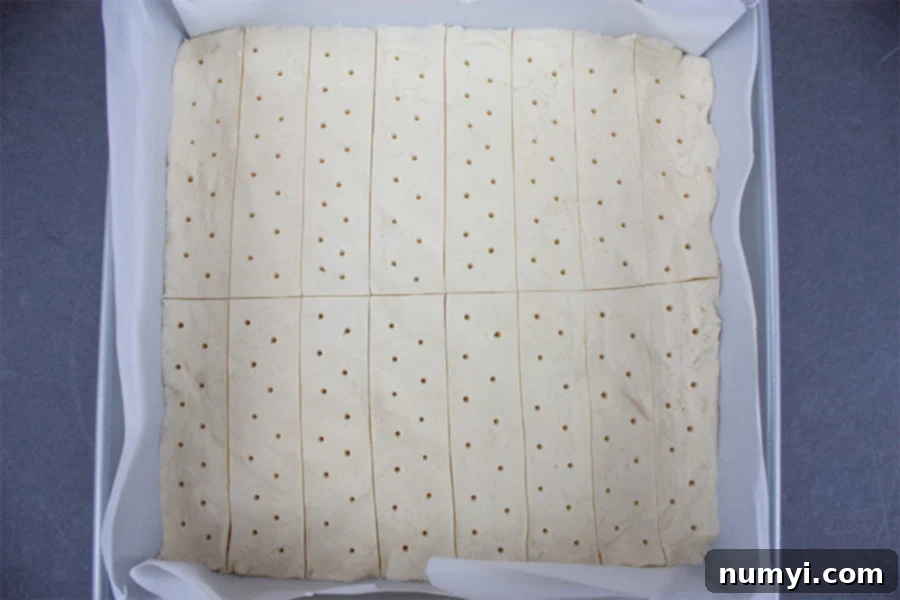
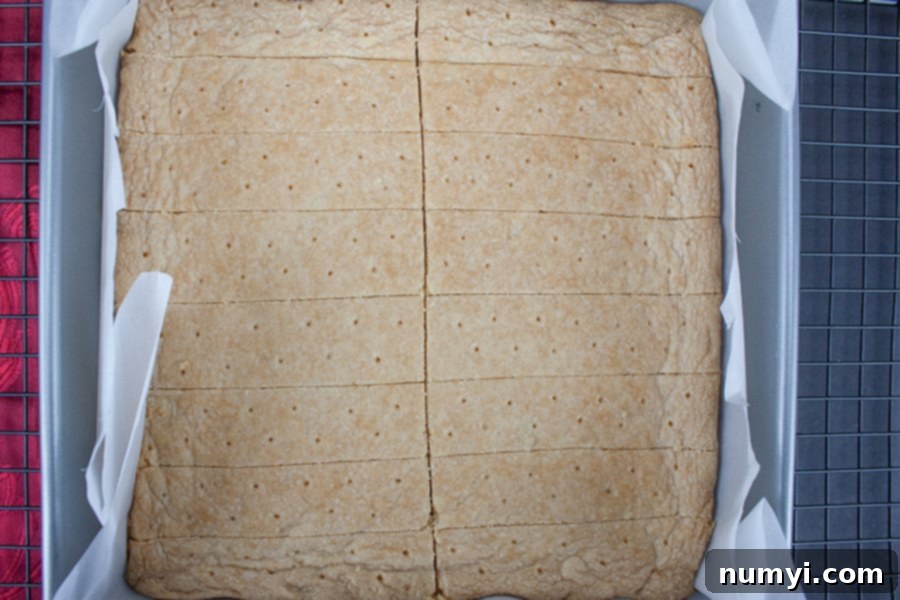
Once your dough is ready, firmly press it into a parchment paper-lined 8×8 or 9×9 inch baking pan. Ensuring the dough is evenly spread is key for uniform baking. Alternatively, for a more traditional aesthetic, you can use a shortbread pan, which often has decorative indentations. After pressing, place a sheet of plastic wrap directly onto the surface of the dough.
Refrigerate the dough for about 20 to 30 minutes. This chilling step is crucial; it allows the butter to firm up, which helps the shortbread maintain its shape and achieve that signature flaky texture as it bakes slowly in the oven.
While the dough chills, preheat your oven to 300 degrees F (150 degrees C), positioning a rack in the upper third of the oven. This low and slow baking temperature is essential for achieving the pale color and delicate texture characteristic of classic shortbread.
After chilling, remove the plastic wrap from the dough. Using a sharp knife, cut the dough into your desired shapes – traditional “fingers” or “sticks” are popular, but you can also opt for squares or wedges if using a round pan. Then, using a toothpick or a wooden skewer, prick the surface of each cookie all over. This process, known as “docking,” allows steam to escape during baking, preventing air pockets and ensuring a perfectly flat, evenly baked cookie.
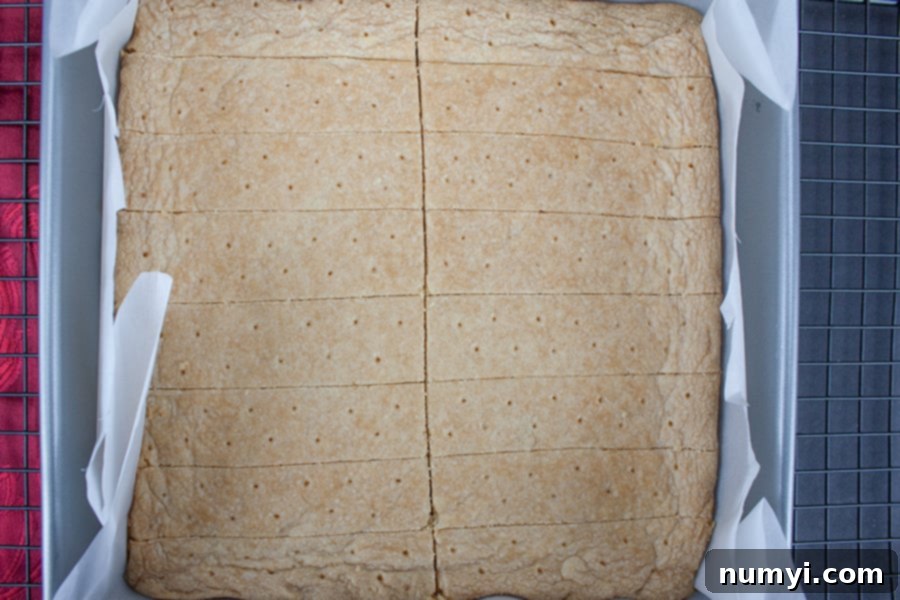
Bake the shortbread for 30-40 minutes. The cookies should be lightly golden brown around the edges and firm in the center. Remember, shortbread is traditionally pale, so avoid overbaking. Once baked, remove the pan from the oven and transfer it to a wire rack. While the cookies are still warm in the pan, carefully recut them along your original lines. This makes it much easier to separate them cleanly once they’ve fully cooled.
I personally find the traditional “sticks” to be a perfect size to accompany my afternoon coffee or tea, offering a delightful and satisfying crunch. Enjoy this melt-in-your-mouth, best shortbread recipe ever!
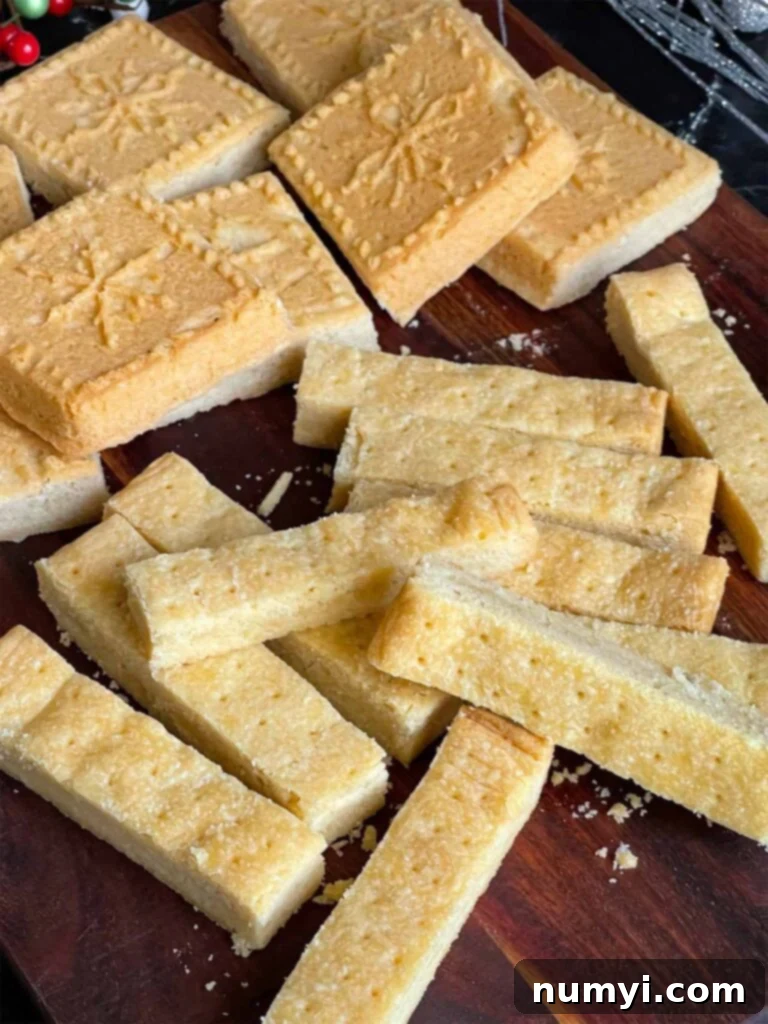
Expert Tips for Unbeatable Shortbread
Achieving bakery-quality shortbread is simple with a few key considerations:
- **Accurate Ingredient Measurement is Key:** This is especially true for flour and powdered sugar. For flour, always aerate it by fluffing it with a fork or whisk before gently spooning it into your measuring cup. Then, level off the top with a straight edge. This prevents compaction and ensures you don’t add too much flour, which can result in a dry, dense cookie. For powdered sugar, similar care should be taken to avoid packing it too tightly.
- **Embrace Unsalted Butter (Preferably European-Style):** This recipe specifically calls for unsalted butter. Using it gives you full control over the salt content, allowing the pure, creamy butter flavor to truly shine. If possible, opt for European butter, which typically has a higher butterfat content (at least 82%). This higher fat percentage contributes to a richer flavor and a more tender, flaky crumb, making a noticeable difference in the final product.
- **Adjust Salt if Using Salted Butter:** If salted butter is all you have on hand, that’s perfectly fine! Just remember to reduce the amount of added kosher salt in the recipe to about 1/4 teaspoon to prevent your cookies from becoming overly salty.
- **Bake Low and Slow for Traditional Pale Color and Buttery Crunch:** Traditionally, shortbread cookies are known for their pale, almost white color. This is achieved by baking them at a low oven temperature for a longer period, which slowly cooks the butter and flour without over-browning them. However, if you prefer a slightly more golden edge and a signature buttery crunch, you can allow them to bake a little longer, but always keep a close eye to prevent them from becoming too dark or overly crisp.
- **Don’t Skip the Piercing (Docking) Step:** Piercing the cookie dough all over with a toothpick or a fork before baking is a crucial step known as “docking.” This allows heat to penetrate the cookie more evenly and, more importantly, prevents air pockets from forming beneath the surface, ensuring your shortbread stays flat, even, and beautifully textured.
Delicious Shortbread Variations to Explore
While classic shortbread is divine on its own, it also serves as a fantastic base for creative variations:
- **Customize Your Cookie Thickness:** The thickness of your shortbread can greatly impact its texture. For this recipe, an 8×8 inch baking pan will yield a thicker, approximately 3/4-inch cookie, resulting in a chewier, more substantial bite. A 9×9 inch pan will produce a thinner, about 1/2-inch cookie that’s crisper. You can also use a dedicated shortbread pan for decorative edges and various traditional shapes.
- **Elegant Wedges:** For a classic presentation, use a round cake pan. Press the dough evenly into the pan, chill, and then cut into elegant wedges before baking. These are perfect for serving with tea or as a dessert centerpiece.
- **Nutty Delight: Pecan Shortbread:** Elevate your shortbread by folding in some finely chopped toasted pecans. The nutty crunch and earthy flavor beautifully complement the buttery richness. Feel free to experiment with other nuts like walnuts or almonds.
- **Chocolate Dipped Indulgence:** For a touch of decadence, once the shortbread cookies are completely cooled, dip half of each cookie in melted dark, milk, or white chocolate. Before the chocolate sets, sprinkle with your favorite festive sprinkles, chopped nuts, or a dash of sea salt for a sweet and salty twist.
- **Sparkling Sugar Finish:** For an extra layer of sweetness and a beautiful visual appeal, sprinkle the top of the unbaked dough with granulated sugar or, for a dazzling effect, use sparkling sugar. The sugar crystals will create a lovely crunch and shimmer on the baked cookies.
- **Citrus Zest Infusion:** Add the finely grated zest of one lemon or orange to the dry ingredients for a bright, aromatic twist that perfectly cuts through the richness of the butter.
- **Spiced Shortbread:** Incorporate a pinch of cinnamon, cardamom, or even a hint of ginger into your flour mixture for a warm, spiced shortbread, especially wonderful during the autumn and winter months.
Frequently Asked Questions About Shortbread Cookies
Absolutely, do not skip the chilling step for your shortbread dough! Chilling the dough for at least 20-30 minutes allows the butter to firm up significantly. This firmness is crucial because it helps the cookies hold their shape beautifully in the oven and prevents them from spreading excessively. As the chilled butter slowly melts during baking, it creates tiny pockets of steam, which are essential for achieving that characteristic tender, flaky, and light texture that defines perfect shortbread.
Yes, these classic shortbread cookies are excellent for making ahead, saving you time when you need them most. You can refrigerate the prepared dough, tightly wrapped in plastic wrap, for up to 1 week. This means you can get all the prep work done in advance and simply bake them fresh when you’re ready to enjoy.To freeze the dough: For longer storage, wrap the dough tightly with plastic wrap, then wrap it again with aluminum foil to prevent freezer burn. You can freeze the dough for up to 2 months. When you’re ready to bake, thaw the dough in the refrigerator overnight before proceeding with the baking instructions.
Once your shortbread cookies have completely cooled to room temperature, transfer them to an airtight container. Stored properly, they will maintain their delicious flavor and crisp texture at room temperature for up to one week. Keeping them in an airtight container prevents them from absorbing moisture from the air, which can make them soft.
You can certainly freeze baked shortbread cookies, but be aware that their texture might not be quite as crispy after thawing as freshly baked ones. To freeze, place the completely cooled cookies in a single layer on a parchment-lined baking sheet and freeze until they are hard, which usually takes about 1 hour. Once frozen, transfer them to a freezer-safe container or bag, layering them between sheets of wax or parchment paper to prevent sticking. They can be frozen for up to 3 months. To thaw, simply remove the cookies from the container, arrange them on a baking sheet or plate, and let them come to room temperature. If you want to revive that signature buttery crunch, pop the thawed cookies into a 300 degree F (150 degrees C) oven for 10-15 minutes. The exact time will depend on the size and thickness of your cookies, so watch them closely.
More Delightful Cookie Recipes
Italian Sesame Seed Cookies (Biscotti Regina)
Eggnog Cookies (cut out)
Best Chewy Snickerdoodle Cookies
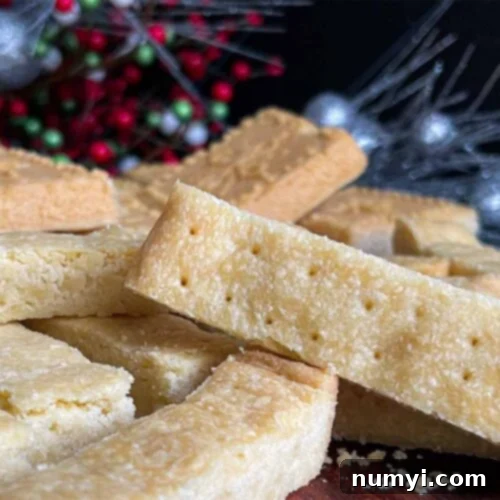
Easy Classic Shortbread Cookies Recipe
Print
Pin
Rate
Ingredients
- 2 cups all-purpose flour
- 3/4 cup confectioners sugar
- 1 1/4 teaspoons kosher salt
- 1 cup unsalted butter softened to room temperature (2 sticks), preferably European-style with high butterfat content
Instructions
-
Prepare your baking pan by lining an 8×8 or 9×9 inch square pan with parchment paper, leaving an overhang on two sides to use as handles later. This will help with easy removal of the shortbread. Set the prepared pan aside.
-
In a medium bowl, whisk together the all-purpose flour, confectioners’ sugar, and kosher salt. Ensure these dry ingredients are thoroughly combined and aerated for an even texture in your cookies.2 cups all-purpose flour, 3/4 cup confectioners sugar, 1 1/4 teaspoons kosher salt
-
Place the softened, room temperature unsalted butter into the bowl of an electric mixer fitted with the paddle attachment. Beat the butter on medium-high speed until it becomes light, creamy, and visibly fluffy, typically taking 3 to 5 minutes. Remember to scrape down the sides of the bowl occasionally to ensure even creaming.1 cup unsalted butter
-
Gradually add the whisked flour mixture to the creamed butter. Beat on low speed until the mixture is just combined and appears pale and fluffy again, usually about 2 minutes. Be careful not to overmix, which can lead to a tougher shortbread.
-
Transfer the dough to the parchment-lined pan and press it firmly and evenly into the pan. Use your hands or the back of a spoon to ensure a compact, smooth surface. Place a sheet of plastic wrap directly onto the dough’s surface and refrigerate for a minimum of 20 minutes; this chilling period is crucial for firming the butter and preventing the cookies from spreading excessively during baking.
-
While the dough is chilling, preheat your oven to 300 degrees F (150 degrees C). Position an oven rack in the upper third of the oven. This low temperature is essential for slow baking, which results in tender, pale shortbread.
-
Remove the chilled dough from the refrigerator and discard the plastic wrap. Using a sharp knife, carefully cut the dough into your desired shapes, such as traditional sticks, squares, or wedges. Then, take a toothpick or a wooden skewer and prick (dock) the surface of each individual cookie at approximately 1/4-inch intervals. This prevents air bubbles and ensures even baking.
-
Bake the shortbread for about 35-40 minutes, or until the edges are lightly golden brown and the center feels firm to the touch. Avoid overbaking if you prefer a pale, classic shortbread. Once baked, remove the pan from the oven and immediately transfer it to a wire rack. While the shortbread is still warm and in the pan, carefully recut the shapes along your original lines. This helps ensure clean breaks once they have fully cooled. Let the cookies cool completely in the pan on the wire rack.
-
Once completely cooled, use the parchment paper overhang as handles to gently lift the entire block of shortbread from the pan. Separate the pre-cut pieces and transfer the delicious shortbread to an airtight container for storage.
Notes
To Make Ahead – You can prepare the dough and press it into the pan, then cut the desired shapes (score the dough). Cover the pan tightly with plastic wrap and refrigerate for up to 2 days before baking as instructed. This is a great way to spread out your baking tasks.
To Freeze the Dough – For longer preparation, wrap the raw shortbread dough tightly with plastic wrap, then wrap it again with aluminum foil to protect it from freezer burn. Freeze the dough for up to 2 months. When you’re ready to bake, thaw the dough completely in the refrigerator overnight before following the baking instructions.
Storing Baked Cookies – Ensure the cookies are completely cooled before storing. Place them in an airtight container at room temperature, where they will stay fresh and delicious for up to one week.
Freezing Baked Cookies – Place completely cooled shortbread cookies on a parchment-lined baking sheet and freeze until solid, about 1 hour. Once frozen, transfer them to a freezer-safe container or bag, layering them between sheets of wax or parchment paper to prevent sticking. They can be frozen for up to 3 months. To thaw, simply remove them from the freezer container and let them come to room temperature on a baking sheet or plate. To restore their signature crispness, you can re-bake thawed cookies in a 300 degree F (150 degrees C) oven for 10-15 minutes, adjusting time based on cookie size.
Nutrition
Recipe inspired by MarthaStewart
